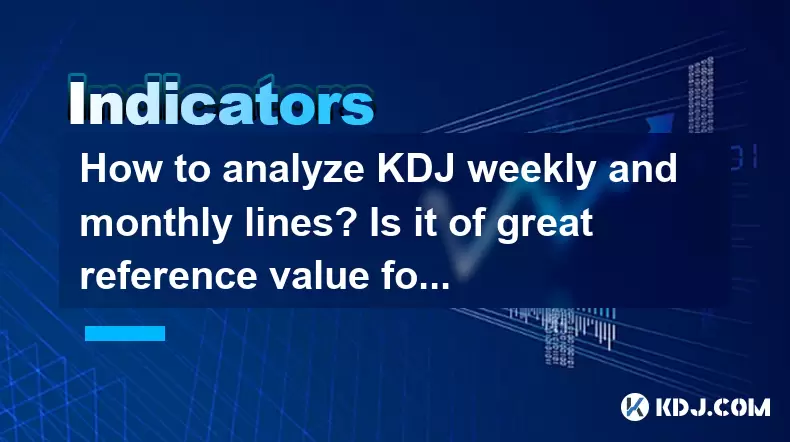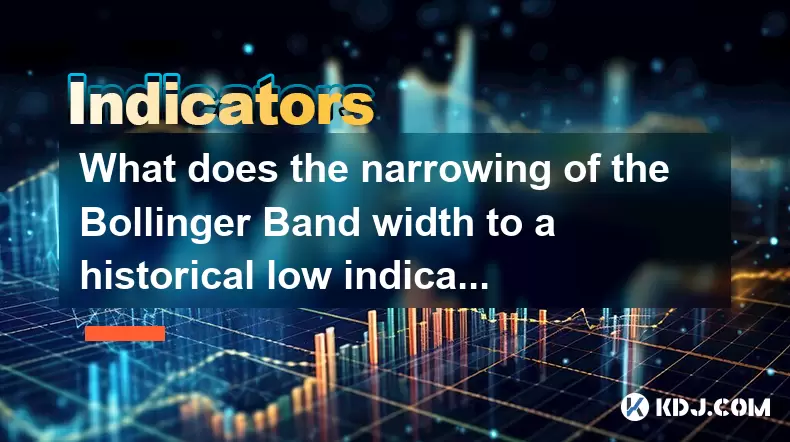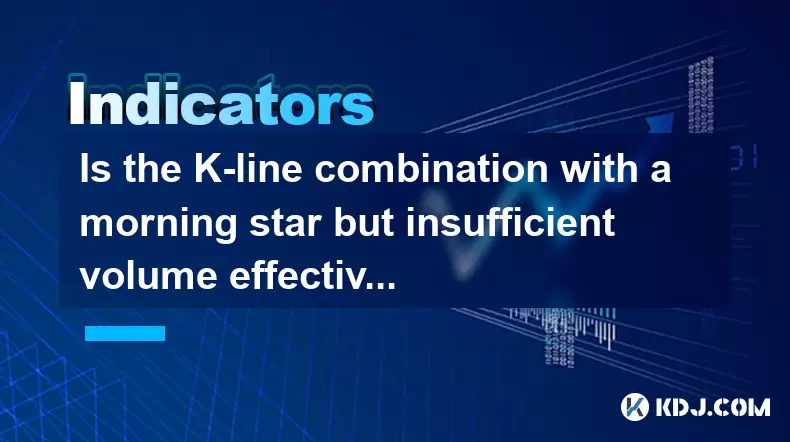-
 Bitcoin
Bitcoin $101,898.5005
-0.75% -
 Ethereum
Ethereum $2,258.1125
-1.07% -
 Tether USDt
Tether USDt $1.0004
0.01% -
 XRP
XRP $2.0178
-2.93% -
 BNB
BNB $624.0243
-1.53% -
 Solana
Solana $134.3298
-0.90% -
 USDC
USDC $0.9999
0.01% -
 TRON
TRON $0.2675
-2.05% -
 Dogecoin
Dogecoin $0.1538
-1.96% -
 Cardano
Cardano $0.5482
-1.11% -
 Hyperliquid
Hyperliquid $35.5636
5.45% -
 Bitcoin Cash
Bitcoin Cash $453.4902
-1.66% -
 Sui
Sui $2.5134
-2.97% -
 UNUS SED LEO
UNUS SED LEO $9.1292
1.77% -
 Chainlink
Chainlink $11.8457
-1.60% -
 Stellar
Stellar $0.2312
-2.73% -
 Avalanche
Avalanche $16.9721
0.29% -
 Toncoin
Toncoin $2.7549
-3.82% -
 Shiba Inu
Shiba Inu $0.0...01081
-1.10% -
 Litecoin
Litecoin $80.8250
-0.71% -
 Hedera
Hedera $0.1374
0.21% -
 Monero
Monero $305.4827
-2.36% -
 Ethena USDe
Ethena USDe $1.0006
0.00% -
 Dai
Dai $1.0000
-0.01% -
 Polkadot
Polkadot $3.2085
-3.12% -
 Bitget Token
Bitget Token $4.0845
-3.13% -
 Uniswap
Uniswap $6.3353
-1.63% -
 Pi
Pi $0.5085
-0.70% -
 Pepe
Pepe $0.0...08913
-3.82% -
 Aave
Aave $232.7090
-0.58%
How to analyze KDJ weekly and monthly lines? Is it of great reference value for long-term investment?
KDJ indicator, useful for long-term crypto investment, analyzes weekly/monthly trends to identify overbought/oversold conditions and potential reversals.
May 23, 2025 at 12:14 am

Introduction to KDJ Indicator
The KDJ indicator, also known as the Stochastic Oscillator, is a popular technical analysis tool used in the cryptocurrency market to gauge the momentum of price movements. It is particularly useful for identifying potential trend reversals and overbought or oversold conditions. The KDJ indicator consists of three lines: K, D, and J, which are calculated based on the high, low, and closing prices of a given period.
Understanding KDJ Weekly and Monthly Lines
When analyzing the KDJ indicator on a weekly or monthly basis, the focus shifts to longer-term trends and potential investment opportunities. Weekly and monthly KDJ lines provide a broader perspective on the market's momentum compared to daily or hourly charts. This makes them especially valuable for long-term investors looking to make informed decisions based on sustained trends.
How to Analyze KDJ Weekly Lines
Analyzing the KDJ indicator on a weekly chart involves a few key steps:
- Select the Weekly Chart: Begin by switching your chart timeframe to weekly. This can typically be done by selecting 'W1' or '1W' on most trading platforms.
- Observe the K, D, and J Lines: Look at the positions and movements of the K, D, and J lines. The K line is generally the fastest moving, followed by the D line, and the J line is derived from the K and D lines.
- Identify Overbought and Oversold Conditions: The KDJ indicator typically ranges between 0 and 100. Values above 80 indicate overbought conditions, while values below 20 suggest oversold conditions. On a weekly chart, these thresholds can signal potential long-term trend reversals.
- Watch for Crossovers: Pay attention to when the K line crosses above or below the D line. A bullish crossover (K line crossing above D line) can signal a buying opportunity, while a bearish crossover (K line crossing below D line) may indicate a selling point.
- Confirm with Price Action: Always confirm KDJ signals with price action. For instance, if the KDJ indicates an overbought condition and the price starts to show a bearish reversal pattern, it strengthens the signal.
How to Analyze KDJ Monthly Lines
Monthly KDJ analysis follows a similar process but focuses on even longer-term trends:
- Select the Monthly Chart: Switch your chart timeframe to monthly by selecting 'M1' or '1M'.
- Analyze the K, D, and J Lines: Observe the monthly movements of the K, D, and J lines. These lines will be smoother and less volatile compared to weekly or daily charts.
- Identify Overbought and Oversold Conditions: Similar to weekly analysis, look for values above 80 (overbought) and below 20 (oversold). Monthly signals are particularly significant for long-term investment decisions.
- Watch for Crossovers: Monitor the K line's crossovers with the D line. These crossovers can provide strong signals for entering or exiting long-term positions.
- Confirm with Price Action: As with weekly analysis, always confirm KDJ signals with price action on the monthly chart. A confirmed signal can be a strong indicator of a long-term trend change.
The Reference Value of KDJ for Long-Term Investment
The KDJ indicator, when analyzed on weekly and monthly charts, can be a valuable tool for long-term investors. Weekly and monthly KDJ lines provide a broader view of market trends, helping investors make more informed decisions about entry and exit points. The longer timeframe reduces the noise and false signals that are more common on shorter timeframes, making the KDJ a reliable indicator for long-term investment strategies.
Practical Example: Using KDJ Weekly and Monthly Lines for Bitcoin Investment
To illustrate how the KDJ indicator can be used for long-term investment in Bitcoin, consider the following example:
- Weekly Analysis: Suppose the weekly KDJ lines for Bitcoin show that the K line has crossed above the D line, and both lines are moving upwards from an oversold condition (below 20). This could indicate a strong buying opportunity for a long-term investment.
- Monthly Analysis: On the monthly chart, if the KDJ lines are still in the oversold zone but beginning to move upwards, it confirms the bullish signal from the weekly chart. This dual confirmation increases the confidence in the long-term investment decision.
- Price Action Confirmation: Additionally, if the price of Bitcoin starts to form a bullish reversal pattern (such as a double bottom or a bullish engulfing candle) around the same time, it further validates the KDJ signals.
Combining KDJ with Other Indicators
While the KDJ indicator is powerful on its own, combining it with other technical indicators can enhance its effectiveness for long-term investment:
- Moving Averages: Use moving averages to confirm the trend direction suggested by the KDJ. For instance, if the KDJ indicates a bullish trend and the price is above a long-term moving average (such as the 200-day or 200-week moving average), it strengthens the bullish signal.
- RSI (Relative Strength Index): The RSI can be used alongside the KDJ to confirm overbought and oversold conditions. If both indicators show overbought or oversold conditions simultaneously, it increases the reliability of the signal.
- MACD (Moving Average Convergence Divergence): The MACD can help confirm the momentum indicated by the KDJ. A bullish crossover in the MACD alongside a bullish KDJ signal can provide a strong entry point for a long-term investment.
Frequently Asked Questions
Q: Can the KDJ indicator be used effectively on shorter timeframes like daily or hourly charts for long-term investment decisions?
A: While the KDJ indicator can be used on shorter timeframes, its effectiveness for long-term investment decisions is significantly reduced. Shorter timeframes are more susceptible to market noise and false signals, making them less reliable for long-term strategies. Weekly and monthly KDJ lines provide a clearer picture of sustained trends, which is more suitable for long-term investment.
Q: How often should I check the KDJ weekly and monthly lines for my long-term investments?
A: For long-term investments, checking the KDJ weekly and monthly lines once a week or once a month, respectively, is generally sufficient. This frequency allows you to stay updated on the broader market trends without being overwhelmed by short-term fluctuations.
Q: Are there any specific cryptocurrencies that the KDJ indicator works better with?
A: The KDJ indicator can be applied to any cryptocurrency. However, it tends to work better with more liquid and widely traded cryptocurrencies like Bitcoin and Ethereum, as their price movements are more predictable and less prone to manipulation.
Q: Can the KDJ indicator be used as a standalone tool for long-term investment decisions?
A: While the KDJ indicator is a powerful tool, it is generally recommended to use it in conjunction with other technical indicators and fundamental analysis for long-term investment decisions. Relying solely on the KDJ may lead to missed opportunities or false signals, so a comprehensive approach is advisable.
Disclaimer:info@kdj.com
The information provided is not trading advice. kdj.com does not assume any responsibility for any investments made based on the information provided in this article. Cryptocurrencies are highly volatile and it is highly recommended that you invest with caution after thorough research!
If you believe that the content used on this website infringes your copyright, please contact us immediately (info@kdj.com) and we will delete it promptly.
- VanEck, Pudgy Penguins, and Nasdaq: A New York Minute on Crypto's Big Moves
- 2025-06-24 01:05:12
- Ripplecoin Cloud Mining: Earn Daily Crypto Rewards?
- 2025-06-24 00:25:13
- SEI Price Prediction: Crypto Analyst Sees Potential Jump to $0.30!
- 2025-06-24 01:05:12
- Dogecoin, Cardano, and Crypto Security: Navigating the Wild West
- 2025-06-24 00:45:12
- Dogecoin Price Analysis and Ozak AI: Riding the Crypto Wave in Style
- 2025-06-24 00:45:12
- Neo Pepe Presale: The Next Big Meme Coin?
- 2025-06-24 00:32:08
Related knowledge

How to interpret that the time-sharing chart shows "volume and price rise together" but the MACD red column shortens?
Jun 24,2025 at 01:08am
Understanding the Concept of 'Volume and Price Rise Together'In cryptocurrency trading, when a time-sharing chart shows that both volume and price rise together, it is typically interpreted as a sign of strong buying pressure. This means more traders are entering long positions, pushing the price higher while increasing the trading volume. This phenomen...

Is it contradictory that the moving average system is arranged in a bullish pattern but the DMI shows a decline in trend strength?
Jun 23,2025 at 11:43pm
Understanding the Moving Average and DMI RelationshipIn cryptocurrency trading, technical analysis plays a crucial role in identifying potential trends and making informed decisions. Two of the most commonly used indicators are the Moving Average (MA) and the Directional Movement Index (DMI). While both tools aim to provide insight into market direction...

How to interpret that the Williams indicator quickly turns back in the overbought area but does not fall below the 50-axis?
Jun 24,2025 at 02:01am
Understanding the Williams %R Indicator in Cryptocurrency TradingThe Williams %R indicator, often referred to as Williams Percent Range, is a momentum oscillator used by traders to identify overbought or oversold conditions in financial markets, including cryptocurrency. It ranges from 0 to -100, where values above -20 are considered overbought and thos...

What is the significance of the gap formed by the gap opening not being filled within five days?
Jun 23,2025 at 09:42pm
Understanding Gaps in Cryptocurrency TradingIn the world of cryptocurrency trading, a gap refers to a situation where the price of an asset jumps from one level to another without any trading activity occurring between those two levels. This often happens over weekends or holidays when the market is closed, and significant news or events occur that impa...

What does the narrowing of the Bollinger Band width to a historical low indicate?
Jun 24,2025 at 02:35am
Understanding Bollinger Bands and Their Role in Technical AnalysisBollinger Bands, developed by John Bollinger in the 1980s, are a popular technical analysis tool used to measure market volatility. They consist of three lines: a simple moving average (SMA) in the center, typically over a 20-period setting, and two outer bands that are set at a standard ...

Is the K-line combination with a morning star but insufficient volume effective?
Jun 24,2025 at 02:49am
Understanding the Morning Star K-line PatternThe morning star is a classic candlestick pattern indicating a potential reversal from a downtrend to an uptrend. It consists of three candles: a large bearish candle, followed by a small-bodied candle (often a doji or spinning top), and then a large bullish candle that closes within the range of the first ca...

How to interpret that the time-sharing chart shows "volume and price rise together" but the MACD red column shortens?
Jun 24,2025 at 01:08am
Understanding the Concept of 'Volume and Price Rise Together'In cryptocurrency trading, when a time-sharing chart shows that both volume and price rise together, it is typically interpreted as a sign of strong buying pressure. This means more traders are entering long positions, pushing the price higher while increasing the trading volume. This phenomen...

Is it contradictory that the moving average system is arranged in a bullish pattern but the DMI shows a decline in trend strength?
Jun 23,2025 at 11:43pm
Understanding the Moving Average and DMI RelationshipIn cryptocurrency trading, technical analysis plays a crucial role in identifying potential trends and making informed decisions. Two of the most commonly used indicators are the Moving Average (MA) and the Directional Movement Index (DMI). While both tools aim to provide insight into market direction...

How to interpret that the Williams indicator quickly turns back in the overbought area but does not fall below the 50-axis?
Jun 24,2025 at 02:01am
Understanding the Williams %R Indicator in Cryptocurrency TradingThe Williams %R indicator, often referred to as Williams Percent Range, is a momentum oscillator used by traders to identify overbought or oversold conditions in financial markets, including cryptocurrency. It ranges from 0 to -100, where values above -20 are considered overbought and thos...

What is the significance of the gap formed by the gap opening not being filled within five days?
Jun 23,2025 at 09:42pm
Understanding Gaps in Cryptocurrency TradingIn the world of cryptocurrency trading, a gap refers to a situation where the price of an asset jumps from one level to another without any trading activity occurring between those two levels. This often happens over weekends or holidays when the market is closed, and significant news or events occur that impa...

What does the narrowing of the Bollinger Band width to a historical low indicate?
Jun 24,2025 at 02:35am
Understanding Bollinger Bands and Their Role in Technical AnalysisBollinger Bands, developed by John Bollinger in the 1980s, are a popular technical analysis tool used to measure market volatility. They consist of three lines: a simple moving average (SMA) in the center, typically over a 20-period setting, and two outer bands that are set at a standard ...

Is the K-line combination with a morning star but insufficient volume effective?
Jun 24,2025 at 02:49am
Understanding the Morning Star K-line PatternThe morning star is a classic candlestick pattern indicating a potential reversal from a downtrend to an uptrend. It consists of three candles: a large bearish candle, followed by a small-bodied candle (often a doji or spinning top), and then a large bullish candle that closes within the range of the first ca...
See all articles
























































































